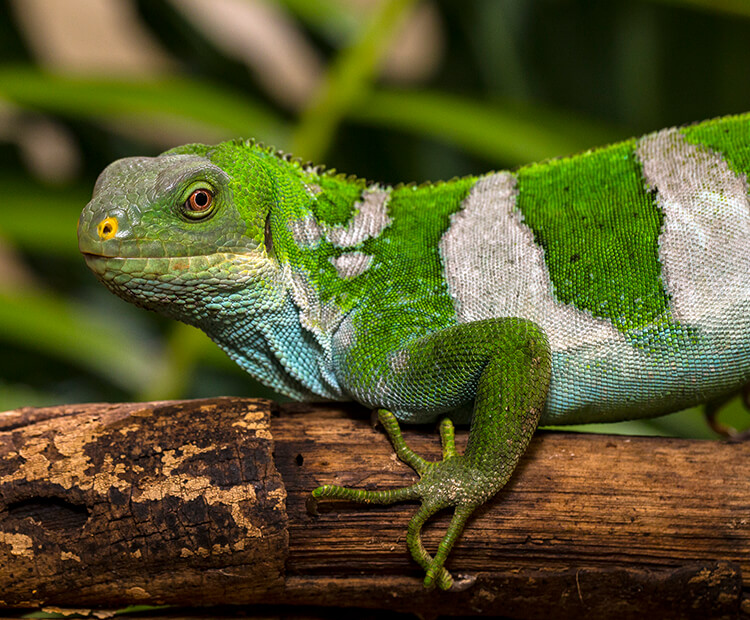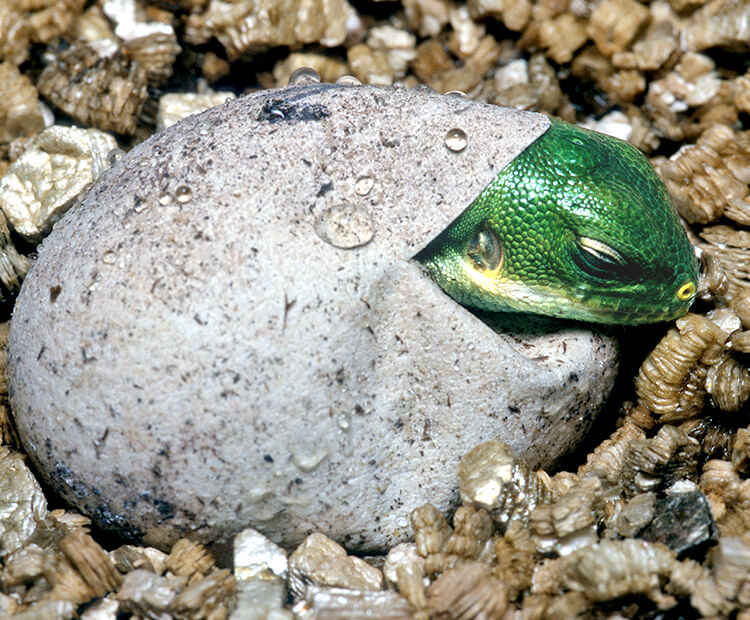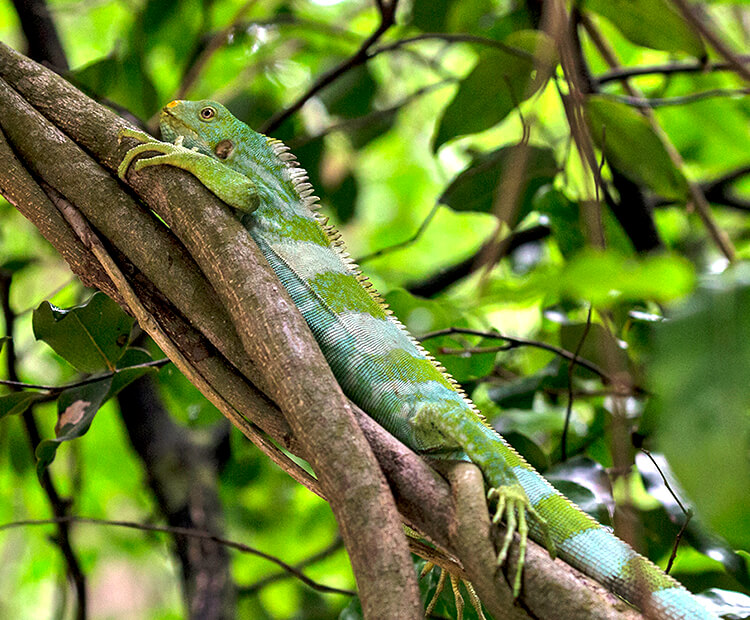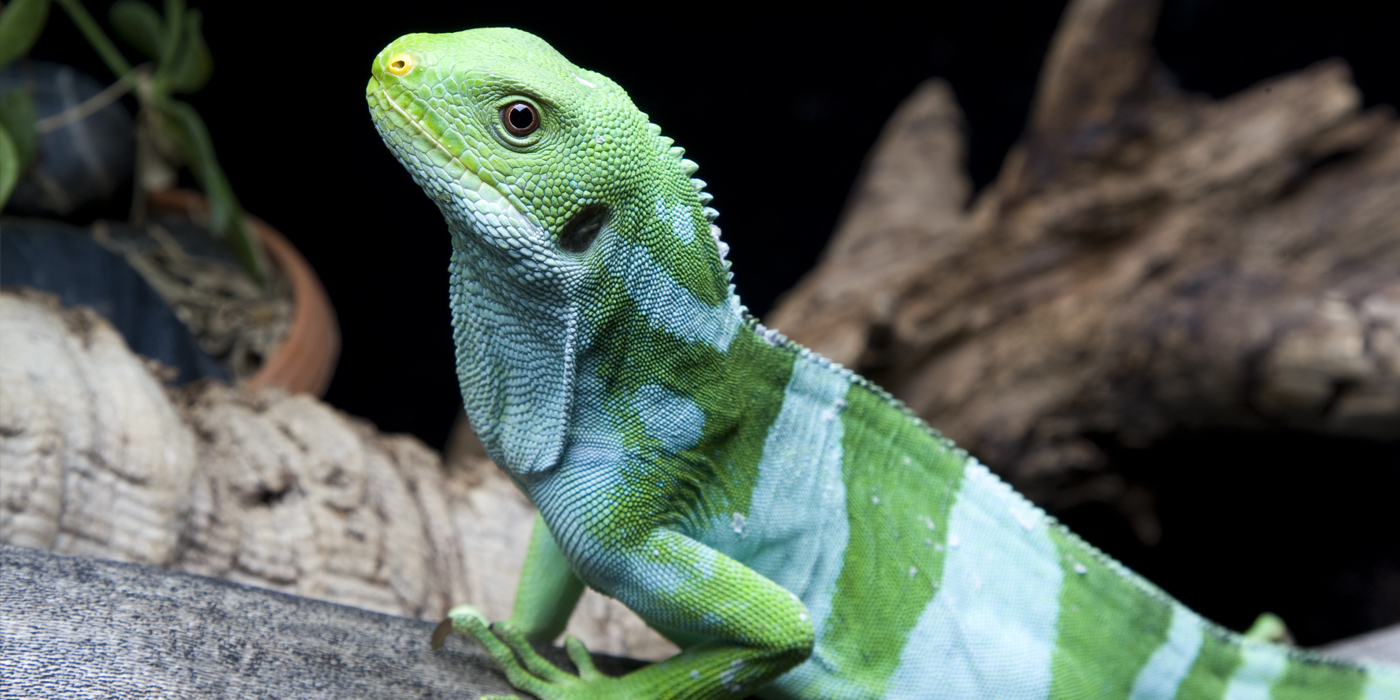STATUS
Critically Endangered


Fiji banded iguanas are bright green lizards with crested spines and long tails, which help them balance while climbing trees. Males have wide blue or light green stripes along their body. Females, on the other hand, are generally solid green but may have a few white or pale blue spots. These lizards have reddish-orange eyes and yellow nostrils.
Until recently, Fiji banded iguanas were thought to be the same species as Lau banded iguanas. Further analysis in 2008, revealed them to be two separate species.
These lizards tend to prefer the plants found in wet forests. They are arboreal, spending most of their time in trees. Therefore, they are found in areas with high vegetation and trees at least 20 feet (6 meters) tall. Like other iguanas, they are also strong swimmers.
hey have experienced extensive habitat loss due to mining, forest burning, logging and agriculture. Human development brings feral cats and black rats, which prey on these lizards. They have also experienced increased predation following the introduction of the small Asian mongoose.

STATUS
Critically Endangered

SCIENTIFIC NAME
Brachylophus

POPULATION
6,000 left

LENGTH
60 centimetres (24 in)

WEIGHT
up to 200 grams (0.44 lb)

HABITAT
RAINFORESTS

iguanas are important seed dispersers for many native plants, their protection is vital to ecosystem health.
It is estimated that the Fiji banded iguana population has decreased by 50 percent in the last 35 to 40 years, and these iguanas are now extinct on some of the islands
Iguana has strong jaws with sharp teeth. They have very long and sharp tail that is usually half of the body size. Tail is used mainly for defense (iguana can punch its enemy with tail).
The heaviest iguana is the blue iguana. It can weigh up to 30 lbs. (14 kilograms)
Iguanas are among the world's most endangered animals. The threats they face include severe habitat degradation by human development and invasive species, as well as harvesting for human use.




